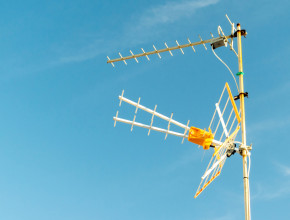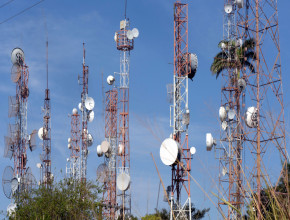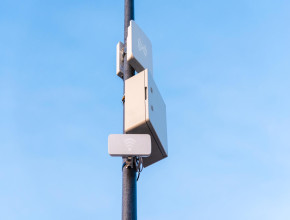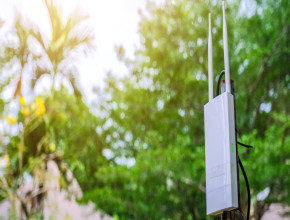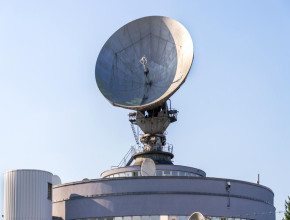
In this fast and furious world, you need to ensure that you have a reliable Wifi network. That helps you to access a strong internet connection. And you can ultimately stream your favourite shows, make video calls, and simply browse the internet effortlessly. One effective way to ensure consistent wireless connectivity is by using a Wifi antenna. That provides fast and reliable internet for your tasks.
Most people are confused about choosing between an external or internal Wifi antenna. If you feel the same way and want to know about both types of antennas, then this guide is all about understanding the essence of external and internal Wifi antennas. Here we go!
Introduction to Wifi Antennas
Wifi antennas are wireless devices to connect to your router, computer, smartphone, and other Wifi-enabled gadgets. It helps you to transmit and receive radio frequency signals to enable wireless communication between different devices.
Wifi antennas typically operate in specific frequency bands, including 2.4 GHz, 5 GHz, and 6 GHz. The sole purpose of it is to establish and maintain wireless networks by converting electrical signals into radio waves and vice versa.
Internal Wifi Antenna
An internal Wifi antenna is a type of Wifi antenna built into routers, laptops, smartphones, and other wireless communication devices. They cannot be attached or detached because they are inside a device and are part of its internal structure. Internal Wi-fi antennas provide better signal coverage, making them a better solution for short distances.
External Wifi Antenna
An external Wifi antenna is another type of Wifi antenna. It does not come with the internal structure of the system. It can be added or replaced on different devices. An external Wifi antenna helps improve the signal strength and range of a Wifi network. Dipole antennas, panel antennas, dish antennas and others are examples of this type of wireless solution.
Difference Between External and Internal Wifi Antennas
After talking about the basic properties of internal and external Wifi antennas, let’s understand how they differ from each other with the help of their key features. This will provide you with a bigger picture in differentiating between external and internal Wifi antennas:
Design and Space Efficiency
Internal Wifi antennas are placed inside devices. They are sleek in design and are packed with the internal side of devices. That allows users to enable no external protrusions and makes them ideal for compact gadgets like smartphones or laptops. These are typically omnidirectional antennas and capture signals from all directions. They save space but may have limitations in signal strength because of their concealed placement.
External Wifi antennas are visible and are often large. In order to purchase them, you need to remember that they take extra space. They come with adjustable capability, making them ideal for improving signal strength and range. If you are looking for a solution that can provide better signal coverage over longer distances, an outdoor Wifi antenna like a parabolic antenna could be the ideal solution.
Types
Internal Wifi antennas are either PCB (printed circuit board) antennas or chip antennas. They are designed to be compact and lightweight. Their structure is not like the usual structure of antennas. They come with a minimalist design and are fixed to the internal structure.
External Wifi antennas are versatile wireless solutions. They are omnidirectional, high-gain or directional antennas that offer versatility in enhancing signal coverage. These external types allow users to use them for a range of purposes, including indoor or outdoor purposes.
Performance
Internal Wifi antennas are designed to provide robust support in limited space. They are tailored to make strong connections for devices that keep nearby network connections. However, their placement inside the devices can cause trouble in making precise wireless connections that affect overall signal strength and range.
External Wifi antennas are a much more flexible and versatile wireless solution. These antennas come in a large size that makes them tailored for high signal strength and extended coverage. The use of antennas allows you to reduce the dead zones and deliver faster speeds in challenging network environments.
Applications
Internal Wifi antennas are the best to use for devices like smartphones, laptops, tablets, and IoT devices. These wireless solutions are the best Wifi antenna to use in situations where compactness and aesthetics are prioritized. Usually, individuals use them for their devices operating near Wifi sources. They use them to download large sizes of data.
External Wifi antennas are widely used in routers, access points, and outdoor networking equipment. These antennas are used for a wider range of applications, such as home networks, industrial settings, and long-distance connections. You can extend the frequency coverage of them and make use of them for your unique concern. Overall, the internal Wifi antennas are good for favouring portability, and external Wifi antennas excel in high-performance applications.
Limitations
Internal Wifi antennas come with several limitations. They can provide you with limited signal strength and range because of their compact design and placement within the device. They cannot be attached or detached from the device. These are less customizable, making them unsuitable for applications that require extensive coverage.
Speaking of external Wifi antennas, these wireless solutions perform better than internal Wifi antennas, but they can be less aesthetically pleasing and require additional space to install. Their large make them come into the contact of physical exposure. That makes them challenging in certain environments.
The Final Word
The demand for the best Wifi antenna is increasing as it helps people gain access to reliable connections. Students, working professionals, or different industries use these wireless connections to access strong internet connections. As we talked about both types of antennas and their differences in the key features, we hope you understand how internal and external Wifi antennas are different from each other. You can choose any type of antenna for your reliable connection. However, it is important that before turning to any of the antennas; you need to ensure that the antenna is fulfilling the demand and comes with the features and functionality that you want for your unique concern.

